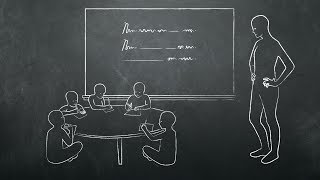Temporary Support
Teach for Life | Wichita, Kansas, USA
As children grow, there are some things they can do on their own, others they cannot do on their own yet, and some they can do with support. You can help students with a difficult skill until they are able to succeed on their own.
Read Transcript
At any point in a child’s development, there are things they can do on their own, things they are not ready to do, and things they can do with some support. For example, a child might be able to ride a tricycle on their own. But they’re definitely not ready to ride a motorcycle! And while they can’t ride a bicycle on their own yet, they can do it with some support. So the teacher provides “Temporary Support” until the student is able to do it on their own. This teaching method is also called “Scaffolding.” There are many ways a teacher can provide Temporary Support. For example, if students are learning to put objects in order from smallest to largest, the teacher could provide support by showing them how to do it first. When a student is working on their own and has trouble deciding which object comes next, the teacher could offer two possibilities and the students can choose one. Another example could be when a student has trouble answering a question. The teacher can suggest some ways to find an answer—such as looking in a book or asking someone else. This teaching method gives students temporary support until they can succeed on their own.
Help teachers and children
worldwide by sharing how
you teach.
A global movement of people sharing knowledge and learning from each other, to better educate our children and create hope for the world.
A global movement of people sharing knowledge and learning from each other, to better educate our children and create hope for the world.






